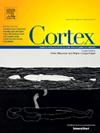纠结的线索:揭示身体所有权感和影响饮食失调中身体自我表现的代理感之间的相互作用
IF 3.3
2区 心理学
Q1 BEHAVIORAL SCIENCES
引用次数: 0
摘要
拥有身体的感觉(身体所有权)和控制它的行为(代理感)有助于身体自我表征的出现,这种改变是饮食失调(EDs)的核心精神病理的根源。然而,针对急诊科这些方面的研究提供了不一致的结果。本研究通过不同的橡胶手错觉(RHI)范式(即经典的视觉-触觉、被动和主动视觉-运动版本),与对照组相比,同时测试了ed的身体所有权和代理感。在任何RHI版本中,在身体所有权问卷中,急诊科患者与对照组之间对错觉的易感性均未出现差异,从而提示存在正常的多感觉整合机制。至关重要的是,相关分析显示,通过身体所有权问卷测量,对身体不满程度越高,对RHI的易感性越高。有趣的是,患有贪食症变体ed的患者在视觉-触觉RHI中报告了假手的代理,揭示了在缺乏自主运动的情况下异常的代理感。此外,在视觉-运动RHI中,ed患者在同步和异步条件下均表现出本体感觉漂移。因此,我们的研究结果揭示了外显和内隐RHI测量之间的分离,当RHI加入手部运动时,显示出更可塑性的身体自我表征,导致更强的本体感觉视觉捕捉。这项研究有助于理解身体所有权和代理之间的复杂联系,揭示了自愿行为在推动ed自我意识中的作用。本文章由计算机程序翻译,如有差异,请以英文原文为准。
The tangled threads: Unveiling the interplay between the sense of body ownership and the sense of agency in impacting the bodily-self representation in eating disorders
The feeling of owning a body (body ownership) and controlling its actions (sense of agency) contributes to the emergence of the bodily-self representation, whose alteration is at the root of the central psychopathology of Eating Disorders (EDs). Yet, studies addressing these aspects in EDs provided inconsistent results. Here, we simultaneously test body ownership and sense of agency in EDs compared to controls by exploiting different rubber hand illusion (RHI) paradigms (i.e., classic visuo-tactile, passive and active visuo-motor versions). In any RHI versions, no differences in the susceptibility to the illusion between EDs patients and controls emerged at the body ownership questionnaire, thus suggesting a normal multisensory integration mechanism. Crucially, correlation analysis revealed that a higher level of body dissatisfaction is associated with increased susceptibility to RHI, as measured by the body ownership questionnaire. Interestingly, patients with a bulimic variant of EDs reported agency toward the fake hand in the visuo-tactile RHI, revealing an abnormal sense of agency in absence of voluntary movement. Moreover, in the visuo-motor RHI, EDs patients exhibited a proprioceptive drift both in synchronous and asynchronous conditions. Hence, our results revealed a dissociation between explicit and implicit RHI measures, showing a more plastic bodily-self representation when the RHI enlists hand movements, leading to a stronger visual-capture of proprioception. This study contributes to understanding the intricate link between body ownership and agency, shedding light on the role of voluntary actions in driving the sense of self in EDs.
求助全文
通过发布文献求助,成功后即可免费获取论文全文。
去求助
来源期刊

Cortex
医学-行为科学
CiteScore
7.00
自引率
5.60%
发文量
250
审稿时长
74 days
期刊介绍:
CORTEX is an international journal devoted to the study of cognition and of the relationship between the nervous system and mental processes, particularly as these are reflected in the behaviour of patients with acquired brain lesions, normal volunteers, children with typical and atypical development, and in the activation of brain regions and systems as recorded by functional neuroimaging techniques. It was founded in 1964 by Ennio De Renzi.
 求助内容:
求助内容: 应助结果提醒方式:
应助结果提醒方式:


